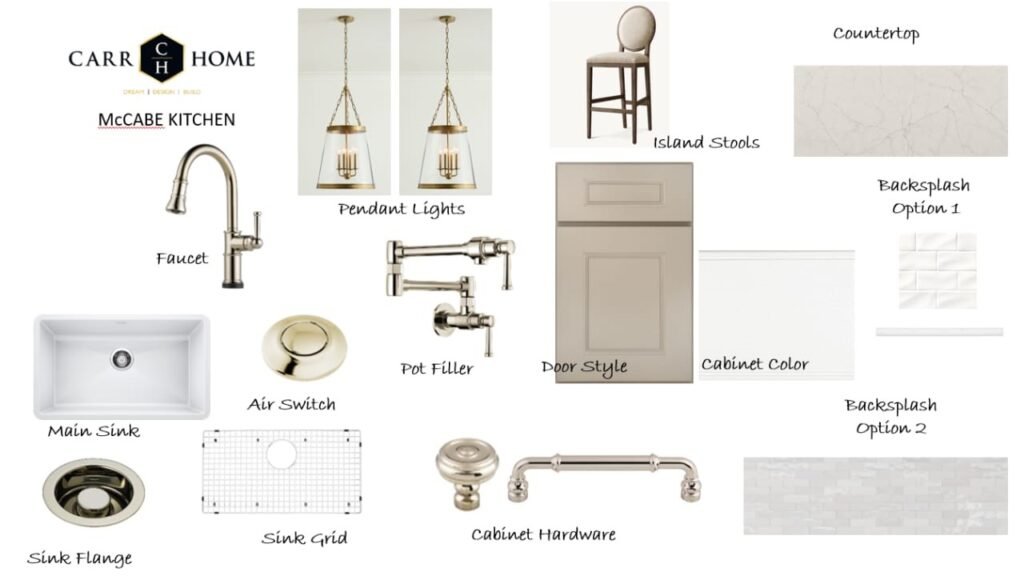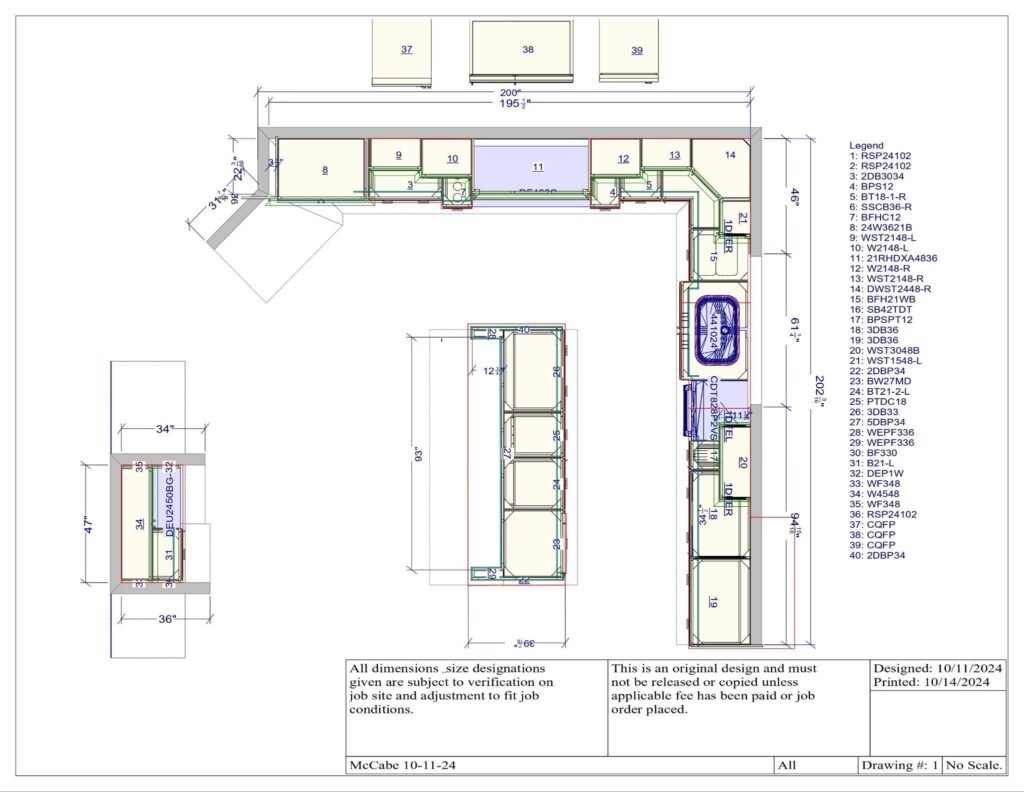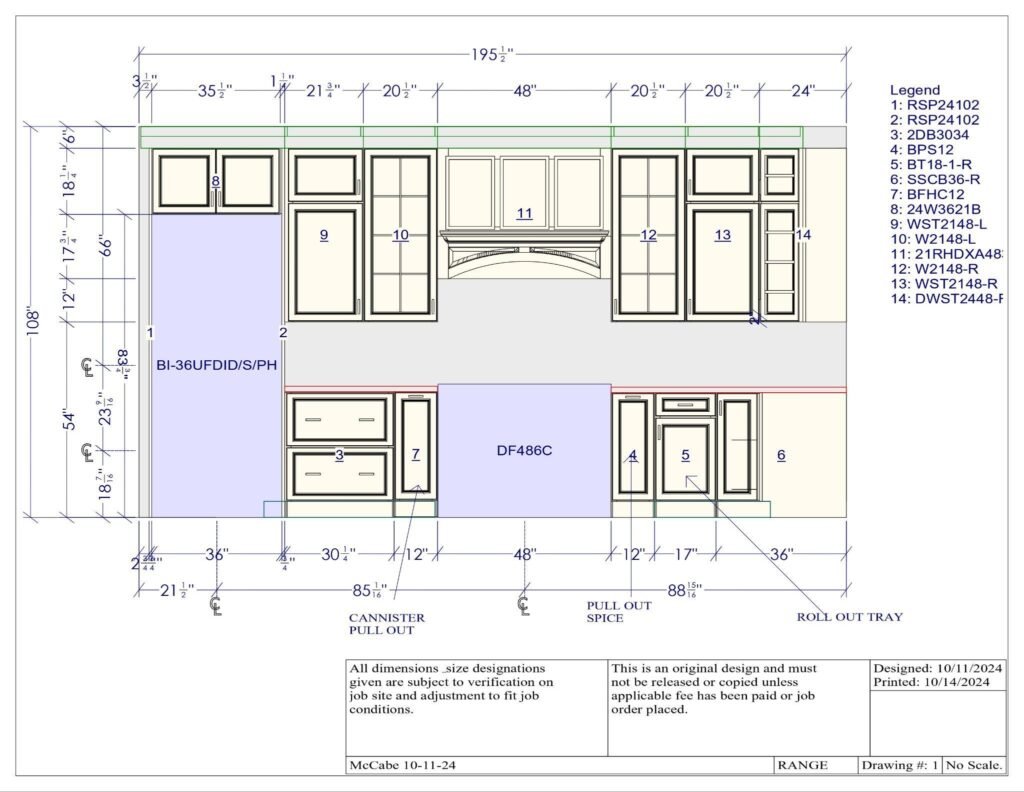Table of Contents
ToggleOverview
Nowadays, people do not settle for graphics and blueprints when redesigning their houses. They want to know just how the final product will look like. This applies most especially to house remodeling. 3D rendering technology has greatly improved the remodeling industry by allowing accurate visual representation of what the projects in question will look like. This has allowed for better understanding, quicker choices, and overall enhancement of project completion.
At Ratio Visuals, we have witnessed how 3D rendering can affect a remodeling project. Just recently, we participated in a kitchen remodeling project for a company based in Philadelphia. Our client needed our work completed within a period of forty-eight hours and submitted a mood board, floor plans, elevations and 3d images that were of low quality. Nonetheless, we were able to meet deadlines with this particular project, and the client was very happy with the outcome.
In this article, we take a closer look at the project, how it was executed, and conclusively tackle how 3D rendering’s role in the remodeling industry can be seamless. We will also explore the areas that we normally focus on in a project like this one, as well as address questions that are often posed about the process of incorporating 3D renders to remodeling workflows.
Case Brief: Remodeling a Kitchen, Philadelphia
In this case, the remodeling company first came to us with an idea of what the kitchen was to look like. They presented:
1.A mood board which included everything from appliances, lights, furniture, materials, door style and colors.

2. A presentation which contained several links and photos of the furniture and lighting equipment in order that the final renderings could be done according to their design preferences.

3. Detailed 2-D floor plans and elevation of the kitchen area and its peripherals including low quality photographs of the area to serve as a baseline of which to build around.


The client made it clear that the project was to be finished within the span of two days towards the end of the production. To make things easier, we proceeded in a systematic fashion which enabled us to move quickly from the design concepts to the construction of a spatial model in 3D.
3D Model Screenshot Approval: Rather than waiting to finish the final renders, we forwarded the client preliminary 3D model screenshots for approval. This stage was necessary to check if we were approximately in the same position in relation to the kitchen space layout, structure and flow concept.
Revisions to the kitchen layout: The client gave some small comments on the 3D screenshots and made some recommendations on the layout. These alterations were not difficult to introduce in the model.
First Draft Renders: We were then able to submit the first draft renders of the kitchen that we had commenced working on once we finalized the layout. The client was pleased with the amount of detail included and further how the renders were faithful to their concept.
Final Delivery: Fulfilling the clients demand, only minor corrections were necessary and finished renders were delivered on time.
Benefits of 3D Rendering in Remodeling Design
These days, 3D rendering has grown to be one of the most useful technologies in the remodeling field. No matter if you’re carrying out a kitchen renovation, bathroom remodeling, or whole house renovations, the chance of being able to visualize a project in a 3D models rendering is quite helpful. Let us take a look at the benefits of 3D rendering in remodeling companies.
1.Improved Client Losses
Designing a room with two-dimensional drawings or blueprints is often difficult to do when the client has no prior experience in architecture or design. 3D visualization techniques eliminate this difficulty, since the clients are presented with an accurate representation of how the remodeled space would look like. This way, there is no room for doubt, and clients can make up their minds with ease.
For instance, in the case of our participating in Philadelphia center kitchen type project, the client had a clear idea of how the whole kitchen would fit in, which appliances would go where and how the cabinet colors would look with the furniture and lighting arrangements. All this resulted in faster approvals and a seamless design development phase.
2. Shortening the Timeframe of Decision-Making
Clients are often the ones most difficult to get the final say when it comes to remodeling because a number of decisions have to be made, including materials, layouts, and the final design. The processes of making decisions are shortened due to 3D renders which provide an overview of the appearance of the completed work.
Since 3D renders offer the entire envisioned scene of the remodeled area, they eliminate delayed communications and clients can make quick choices. This effectiveness was experienced in our kitchen undertaking when the client approved the changes of the layout after only viewing the 3D screenshots, which made it possible for us to continue rendering without waiting.
3. Better Interactions with Clients
In general construction projects, remodeling in particular, miscommunication is one of the all too familiar problems. Clients may find it hard to convey what they want, or the remodeling firm may find it difficult to understand the customer’s requirements due to scanty information or poor sketches. 3D renders address this communication hurdle by using a model that both the client and the remodeler can visualize.
When a client is able to see the design being constructed with all the minute details such as the tiles, texture of the tiles and handles on cabinets, there are reduced chances that the client misunderstood anything which saw lower chances that the actual end product did not meet their expectations.
4. Market Leveraging Strategy
There is so much rivalry among businesses, and because this is the case, there is a need for every business to have something unique and stick out from the rest. Effective 3D renders not only win the interest of potential clients but also help the remodeling company establish a reputation for innovation and professionalism.
From what we have had so far, a good number of clients tend to have received 3D renders very well as they seem to be able to replicate real life to a good extent in their client’s eyes. This is very beneficial for the companies that are looking for alternatives to most of their rivals who are stuck with the old ways of designing.
5. Reducing the Level of Rework and Errors
It would be an understatement to say that construction interrelated projects do not face or incur any rework owing the fact that there is always the probability of design interpretations gone wrong. It is imperative to mention at this point that 3D renders allow potential clients to have a good glimpse of the end product and make changes before a single stone is laid.
For example, in this case, a few modifications were introduced by the client who studied the 3D model as well as screen shots of the design. As a result, we were able to correct them at an early stage which in turn reduced the amount of reworking that we would have to do and thus reduced the cost incurred as well as time taken.
The Process of 3D Rendering Used by Remodeling Companies
We at Ratio Visuals aim at making the 3D rendering process as smooth and quick as possible and this is how it is done.
Step 1: Initial Submission Of Materials
The first step is when a client is required to present all the required documents; this includes:
2D floor plans in order for us to familiarize and understand the layout and structure of the building.
Specifications of materials, which include the materials to be used, finishes, and even colors.
Visual references such as inspiration images, mood boards, and low-quality 3D views presenting the design’s conceptualization process.
In case the submission is more detailed, we would be in a better position to depict the vision of the client in the render
Step 2: Confirmation of Camera Angles
After we have been granted the materials, there is a review of those materials and various camera angles suitable for the 3D renders are suggested. The angles suggested at this step are among the most important as they determine how the space will look like. We work closely with the client in deciding these angles. This is to ensure that every aspect of the design that needs to be highlighted is presented in the best way possible.
Step 3: First Draft Renders
After the camera angles are confirmed with the client, we proceed to make draft renders of the project. This is typically done within 3 to 5 days depending on the level of complexity of work involved in the project.
Step 4: Revisions And Adjustments
It is to be in the extreme of things later on for some clients to want to have other aspects changed after they’ve seen the first draft. So, if it’s changing the hue of the cabinetry, moving around furniture, or altering the intensity of the lights, we gladly make those changes and edit the rasters as needed. Timelines for revisions range between 1 to 2 days.
Step 5: Final Delivery
After the client has approved the revisions, we send out the final renders and the project is regarded as completed.
Frequently Asked Questions (FAQs) About 3D Renders for Remodeling Companies
In order to move forward, we will ask for your 2D floor plans, specifications of materials and any inspiration pictures or moodboards that you have. And if there are some low quality 3d-scenes, it's also good to have them, as it allows us to visualize the picture rather in a better way.
After all materials are received and camera angle positions confirmed, first draft renders are usually ready within 3 to 5 days, and if changes are required – we do it in 1 to 2 days.
Yes, after the first draft, we expect our clients to provide feedback. If so, we will be glad to refine the initial drafts accordingly.
Through 3D renders, clients are introduced to the almost finished look of the project in detail. This enhances presentation, speeds up approval processes, enhances cooperation and reduces the chances of having to do expensive changes.
Any remodeling project be it a kitchen, bath, living room, even an entire house can benefit from 3 dimensional rendering. Other projects too that we have done include kitchens and landscape designs as well as large commercial undertakings.
Conclusion: The Future of Remodeling with 3D Rendering.
With 3d rendering technology improving, it is evident that remodeling companies that embrace such tools will definitely succeed.

